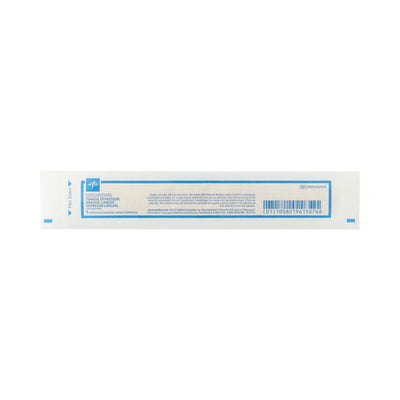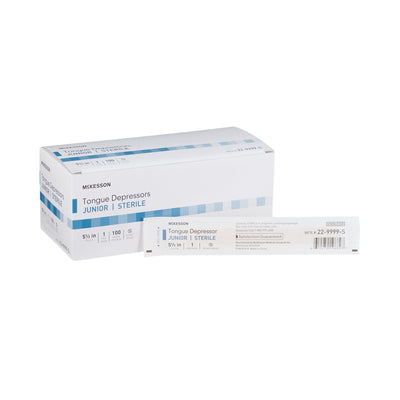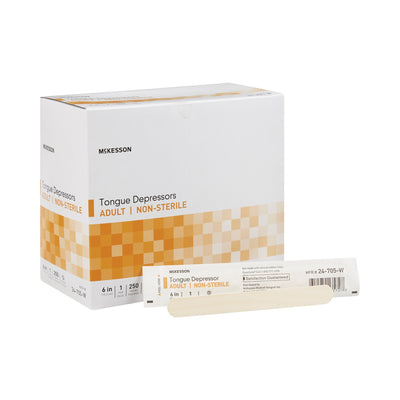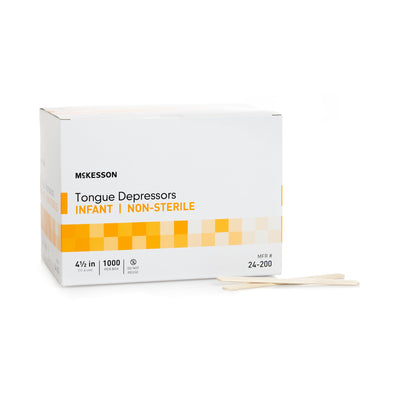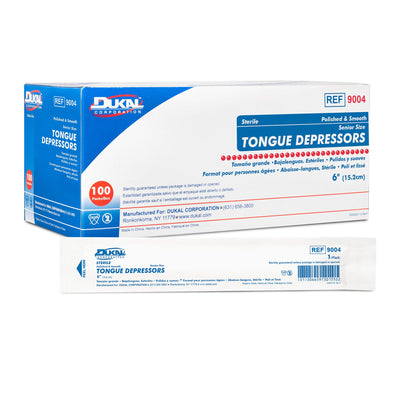Tongue Depressors
Filter and sort
A Professional's Guide to Tongue Depressors
In any medical setting, from a bustling clinic to a school nurse's office, the tools you use must be reliable, safe, and fit-for-purpose. A tongue depressor is more than just a piece of wood; it's an essential instrument for examination. This guide is designed to help you confidently select the right type of tongue depressor based on your specific application, ensuring both patient safety and cost-effectiveness.
Choosing with Confidence: A Quick Comparison
Your choice of tongue depressor comes down to four key factors: application, patient age, sterility, and packaging. Use this table to quickly identify the best product for your needs.
| Best For | Sterility | Our Recommendation |
|---|---|---|
| Routine Adult Exams | Non-Sterile | McKesson 6" Depressor |
| Pediatric Exams | Non-Sterile | McKesson 5.5" Depressor |
| Reducing Patient Anxiety | Non-Sterile | Puritan® Grape Flavored |
| Hygienic/Clinical Use | Sterile | McKesson Sterile Junior |
| Infant Examinations | Non-Sterile | McKesson Infant Depressor |
Frequently Asked Questions
What is the difference between a sterile and non-sterile tongue depressor?
The choice is critical for patient safety.
A sterile tongue depressor is individually wrapped to be free from bacteria and other contaminants. It is essential for any procedure where maintaining a hygienic field is required, such as applying medication or examining patients with compromised immune systems.
A non-sterile tongue depressor is the economical choice for routine, non-invasive applications like standard oral exams on intact skin, where the risk of infection is minimal.
Are all wooden tongue depressors the same quality?
No. High-quality depressors, like those from McKesson and Puritan, are made from Northern White Birch wood, which provides superior strength and a smooth, splinter-free finish. Precision-cut, rounded edges are another key feature that enhances patient comfort and safety during an examination.
What are the standard sizes for tongue depressors?
The most common sizes correspond to patient age: Senior (6 inches) for adults, Junior (5.5 inches) for children, and Infant (4.5 inches) for the smallest patients. Using the correct size prevents activating the gag reflex and allows for a better view.
Why Professionals Choose McKesson
In a professional medical environment, consistency is non-negotiable. You need to know that the 1st and the 500th depressor in a box will have the same strength, smoothness, and structural integrity. Brands like McKesson are trusted by hospitals, clinics, and private practices across the country because they adhere to the highest manufacturing standards.
By choosing these brands, you are not just buying a disposable tool; you are investing in reliability and patient safety, ensuring every examination is performed with a product you can trust.
Equip Your Practice with Confidence
Browse our complete collection to find the exact tongue depressors that meet your clinical standards and budget. Order in bulk and ensure you are always prepared.



